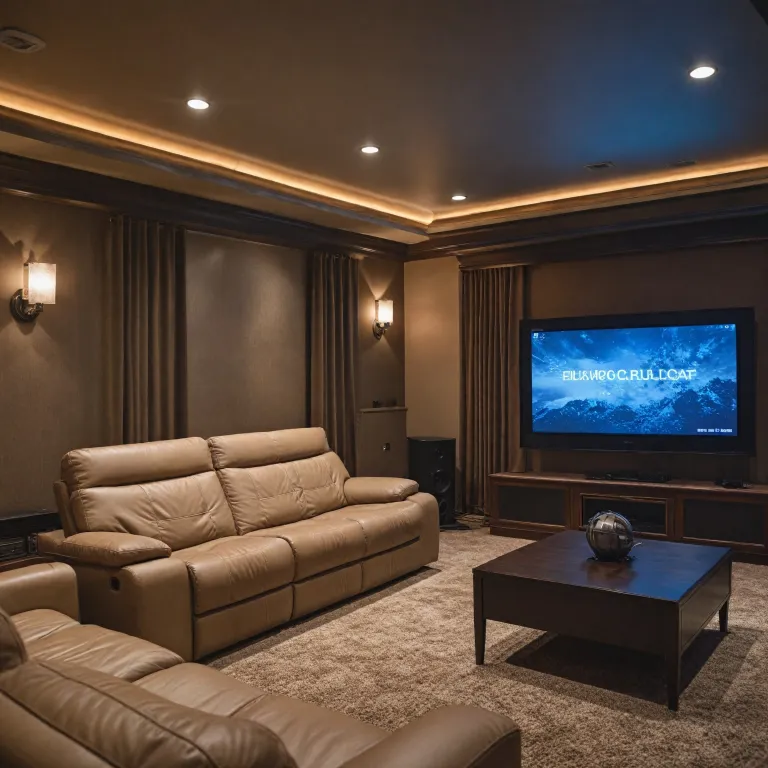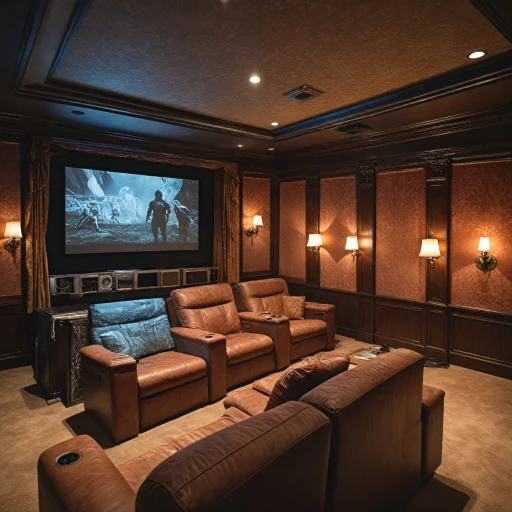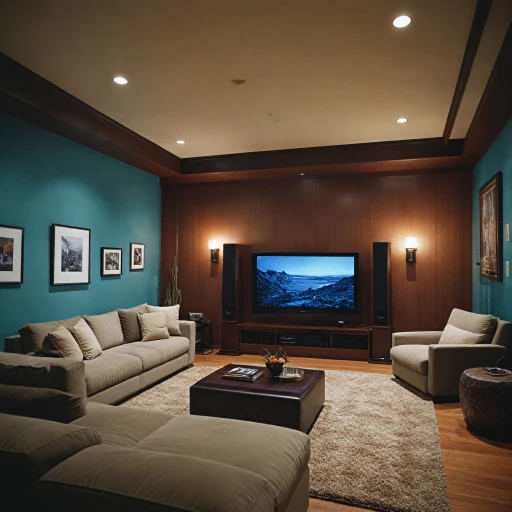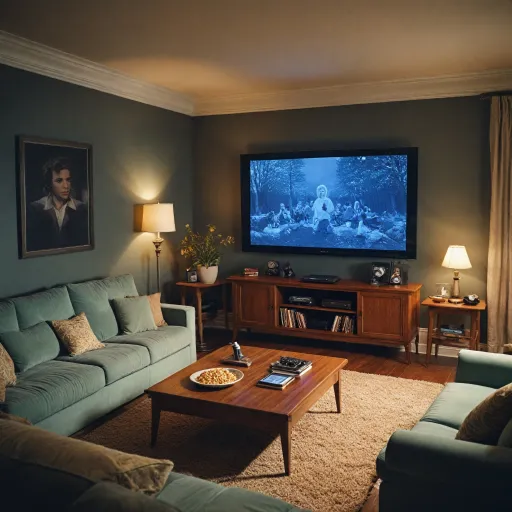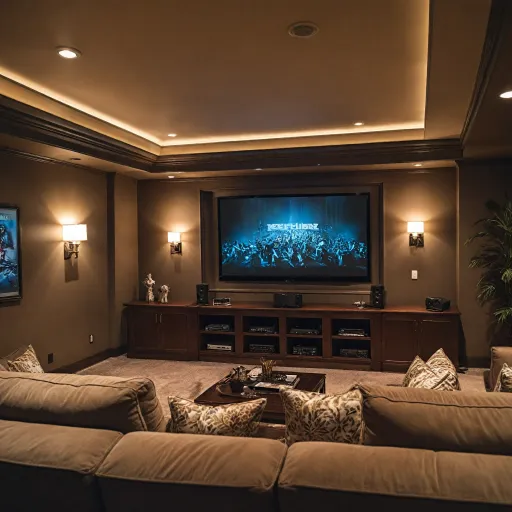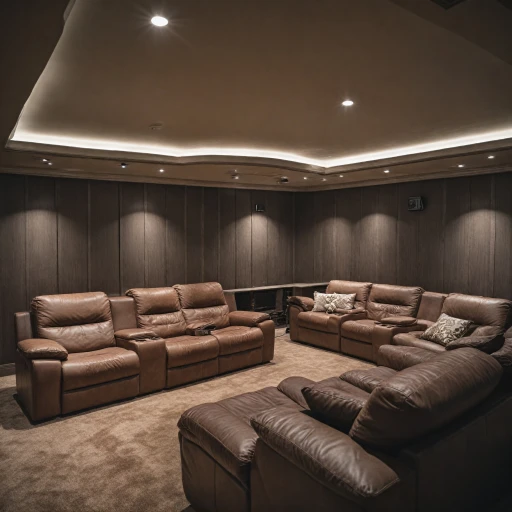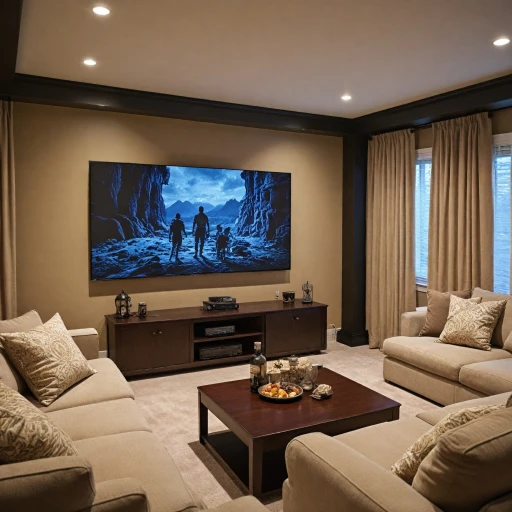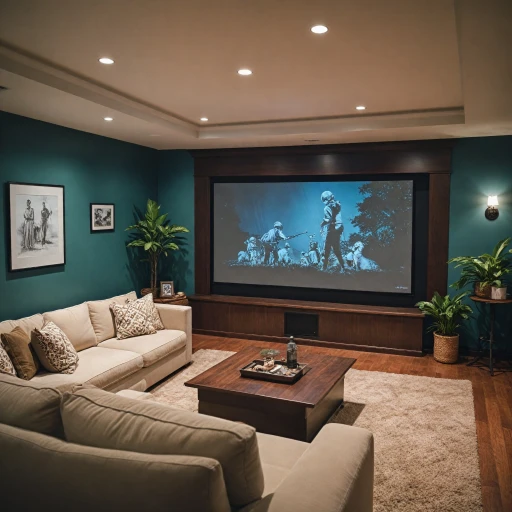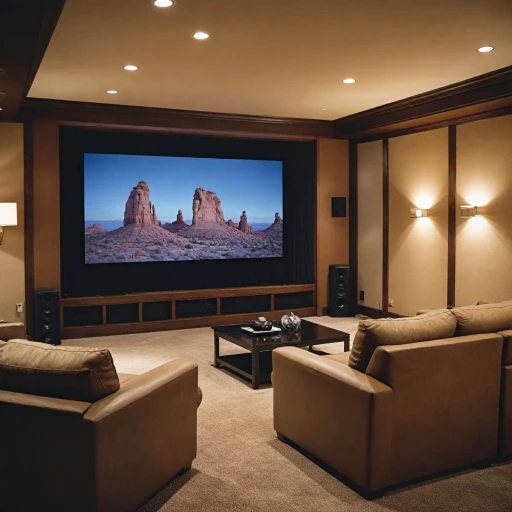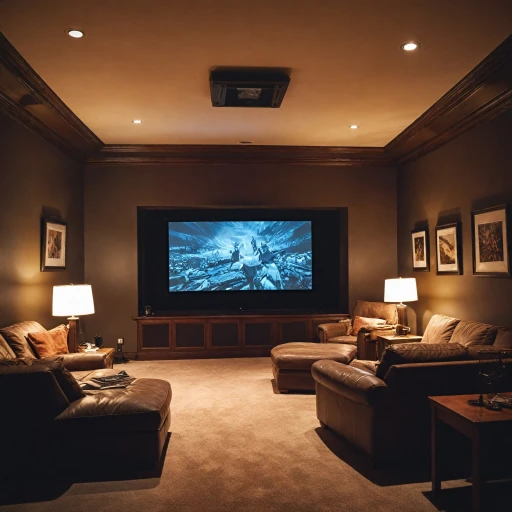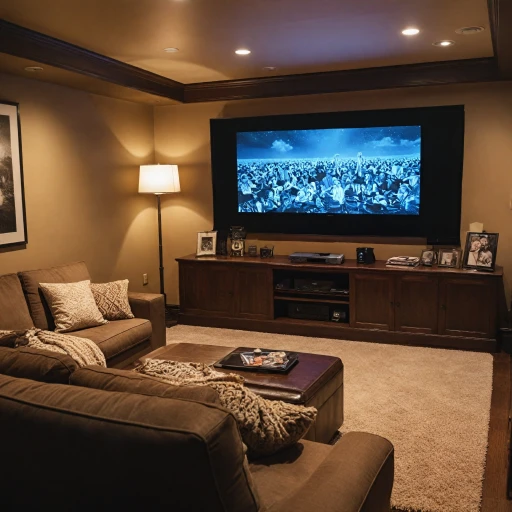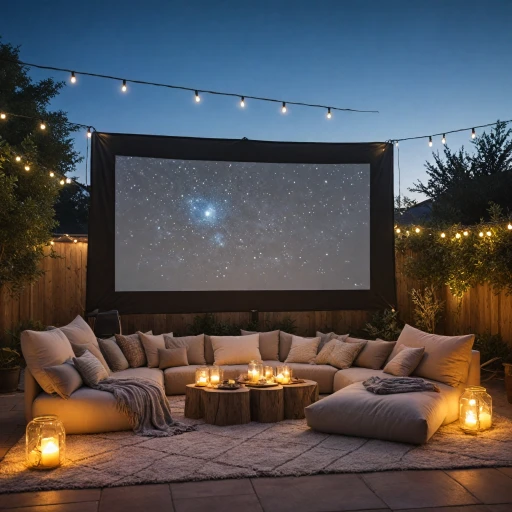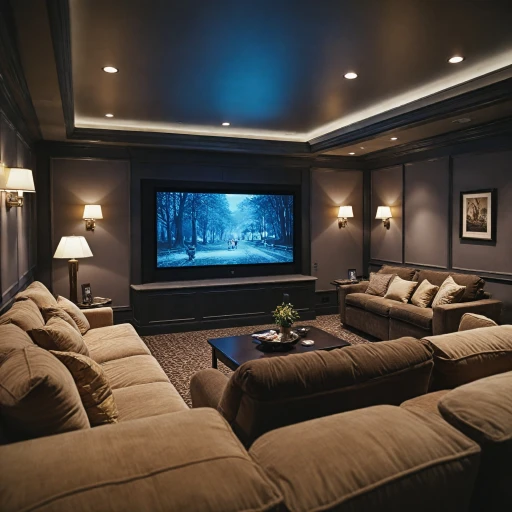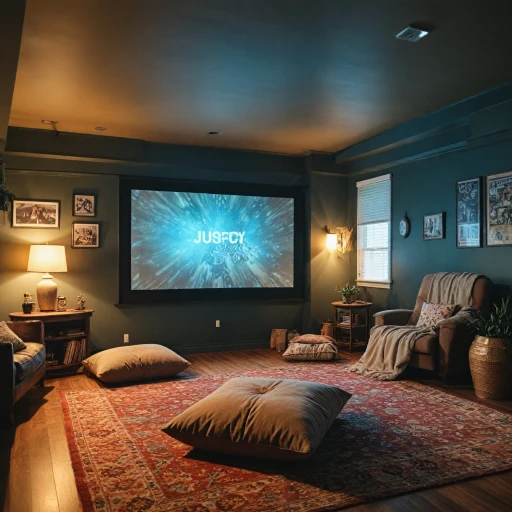
The Basics of XLR and RCA Connections
Essential Connection Types Explained
When setting up a home theater projector, understanding the basics of connection types like XLR and RCA is crucial. These connectors are employed to transmit balanced and unbalanced audio signals, respectively. XLR connections are primarily used in professional audio environments due to their balanced nature. A balanced connection involves three conductors: a positive, a negative, and a ground, which helps in reducing noise and interference. Typically, an XLR male connector transmits signals to an XLR female connector, ensuring a secure connection. On the other hand, RCA connections are ubiquitous in home audio systems, facilitating stereo sound transmission through unbalanced cables. RCA cables and connectors are recognizable by their red and white (or black) color coding for right and left audio channels, making them a staple in consumer audio gear. To explore the role these connections play in a home theater setup, and how converters like XLR to RCA work, one should consider both the audio quality and installation requirements. For a deeper understanding of choosing the right 100ft HDMI cable for your home projector, you might want to delve into this informative guide on HDMI cables. The specifics of XLR and RCA compatibility, including balanced input and output capabilities, are critical for achieving the best audio experience. In the journey towards discovering which connections suit your needs, it’s beneficial to consider product details such as the pin configuration, the price, and even the type of materials involved, like oxygen-free copper, which enhances signal integrity and longevity.Why Use XLR to RCA in Home Theater Projectors?
Optimizing Audio with XLR to RCA Connections in Home Theaters
In the realm of home theater projectors, achieving high-quality audio is crucial. This is where the XLR to RCA connection comes into play, providing an effective solution for transferring audio from professional-grade equipment to consumer-grade electronics. Understanding why this connection is used can make a significant difference in your home theater experience.
XLR connectors are favored in professional audio settings due to their balanced design that helps in reducing noise and interference. With three internal conductors (positive, negative, and ground), XLR cables excel in maintaining audio fidelity over longer distances. This balanced audio cable configuration ensures minimal signal degradation and is often ideal for delicate audio environments, particularly in home theaters.
When connecting XLR balanced inputs to RCA outputs, the transition to an unbalanced connection is necessary. RCA cables, commonly found in most consumer electronics, utilize a two-conductor system—one for the signal and the other for grounding. The necessity for an XLR to RCA connection arises when you need to bridge the gap between professional audio systems and home theater outputs.
There are numerous reasons to convert XLR to RCA within a home theater setup. Firstly, many stereo systems and AV receivers come with RCA inputs but exclude balanced XLR. Secondly, if you're aiming for longer feet of cable without quality loss, an XLR to RCA converter might be your best bet. These converters, coupled with high-quality adapter cables, ensure a clean transition of audio signal.
Furthermore, using components like XLR male to RCA male adapters—which mitigate ground loop issues—can enhance your setup and maintain seamless audio quality. Thankfully, products often promise free shipping, while some boast features like oxygen free copper conductors for superior transmission.
Overall, while bridging XLR and RCA is not without its challenges, the payoff in enhanced audio quality can elevate your entire viewing experience. To streamline complex setups like wireless HDMI transmitters, explore our guide to enhance your home theater experience.
Challenges in Converting XLR to RCA
Overcoming the Hurdles in XLR to RCA Conversion
Transitioning from XLR to RCA connections in home theater projectors isn't without its challenges, and understanding these can save you from potential pitfalls. Firstly, the core difference between these two lies in their audio capabilities. XLR cables offer a balanced connection, using three conductors: a positive, a negative, and a ground. This setup minimizes interference and noise, making it ideal for professional audio environments. In contrast, RCA connectors are typically unbalanced and use just two conductors, potentially being more susceptible to signal noise and ground loops in longer cable runs. Moreover, it's essential to recognize the physical differences. XLR connectors are robust and typically include mechanisms to ensure secure connections, while RCA cables are more prone to accidental disconnections. When transitioning from XLR to RCA, ensuring a stable and reliable connection requires using a quality adapter cable or xlr converter that firmly accommodates the xlr male and rca male connectors. Price and product quality can also be a point of consideration. Higher-quality cables often use oxygen-free copper and provide better conductor integrity, translating to clearer audio quality. Finding the ideal balance between cost and quality is crucial, especially if free shipping is not an option. Even the best connectors can face challenges with stereo imaging and maintaining consistent sound profiles across different devices. Connecting an xlr balanced output to an unbalanced rca input can sometimes cause noticeable changes in audio clarity or lead to slight volume drops. Thus, ensuring that you have the right cables and adapters for your specific setup is paramount. Finally, investing in an appropriate converter or adapter helps bridge these systemic differences effectively. Look for products that handle the transition with minimal signal loss and cater to both male rca and xlr male configurations for seamless, high-quality audio transmission. Understanding these challenges empowers you to tailor your equipment choices, optimizing your home theater experience. For further information on setting up a balanced audio system and how it can complement your space, consider exploring expert insights on finding the perfect subwoofer for your home theater.Choosing the Right Cables and Adapters
Finding Suitable Cables and Adapters for Your Setup
Selecting the right cables and adapters is crucial to ensure a seamless connection between XLR and RCA in your home theater setup. Given that XLR is a balanced connection often used for professional audio applications and RCA is typically unbalanced and used in consumer electronics, the objective is to bridge two different systems efficiently.
Here are some crucial factors to consider when choosing the appropriate cables and adapters:
- Cable Type: Choose a xlr rca adapter cable that suits your setup. You will encounter options like xlr to rca cables or standalone xlr converter boxes for different audio connection needs.
- Audio Quality: Opt for cables with high-quality conductors. Oxygen-free copper is recommended due to its low resistance and durability, improving sound transmission over longer feet.
- Connector Quality: Check for well-constructed xlr connector and rca male plugs. Avoid low-quality connectors as they might not secure firmly, leading to connection issues.
- Grounding: Since XLR is a balanced connection with a ground (pin 1), it’s vital to match the grounding configuration when connecting to RCA to prevent ground loop issues.
- Price and Shipping: Consider the price but balance it with quality. Look for options that offer free shipping to save costs.
By paying attention to these considerations, you can ensure that your home theater system delivers optimal audio performance. A well-chosen audio cable and adapter combination can be the difference between a “just okay” sound experience and one that makes you feel every note.
Installation Tips for XLR to RCA Connections
Ensuring a Smooth Installation Process
Installing XLR to RCA connections in a home theater projector setup can be streamlined with a few key steps. First, choose a quality adapter that accurately converts the balanced XLR input to an unbalanced RCA output. It’s vital to ensure the adapter cable has compatibility with the audio system and offers good shielding to prevent interference. Start by examining the XLR cable and ensuring it is correctly connected to the XLR balanced input, with the male XLR connector fitting firmly. It's crucial to inspect the number of pins, as the standard setup usually involves three pins for audio cables. Next, the RCA male connector should be inserted securely into the corresponding RCA input. Make sure the connection is tight to avoid any ground loop issues that could lead to unwanted noise. When dealing with longer distances, consider the length of the cable. Using cables with oxygen-free copper conductors can help maintain audio quality across feet of distance without loss. Checking the quality of connectors can prevent issues related to wear and tear over time. For a balanced audio output, it's recommended to keep the environment free of any unnecessary electrical interference. This practice will minimize the risk of audio distortion. Also, use a product that specifies compatibility with your home theater projector's requirements to ensure optimal performance. By addressing these installation considerations, the setup will not only be efficient but also maintain high-quality audio experience. Ensure you are using reliable adapters and free shipping options to maximize the cost efficiency of your home setup.Troubleshooting Common Issues
Solving Connection and Signal Interference Challenges
Dealing with XLR to RCA connections in home theater projectors may sometimes lead to issues, but several strategies can help overcome these common hurdles. Here are some practical tips you can implement:- Check Your Connectors and Cables: Ensure your XLR connector and RCA cable are properly plugged into the ports. The XLR male should be securely fit and free from any defects in its pins or conductors that might cause a loose connection.
- Tackle Ground Loop Interference: A ground loop can cause annoying hums or buzzing sounds in the audio. Look for an adapter or converter specifically designed to handle ground loops. These products often include features like a ground-free design to mitigate this problem.
- Verify Compatibility: Ensure your projector supports both balanced and unbalanced connections. This ensures that the stereo audio signal is properly interpreted when using an audio cable from a balanced connection (XLR) to an unbalanced RCA input.
- Examine the Cable Quality: Use high-quality cables, ideally those with oxygen free copper conductors, which reduce noise and signal loss. While a low price might be tempting, investing in premium cables can pay off in superior audio performance.
- Inspect the Length of the Cable: Long cable runs, exceeding several feet, can introduce noise. Keeping your cable as short as possible will reduce potential signal degradation.
- Use a Recommended Adapter: When using an XLR converter or adapter cable, ensure the pin configuration is correct for your specific setup, whether for XLR male or RCA male outputs.
- Test Different Sources: Sometimes the issue may lie with the audio source itself, not the connection. Test other sources to rule out projector or source complications.
